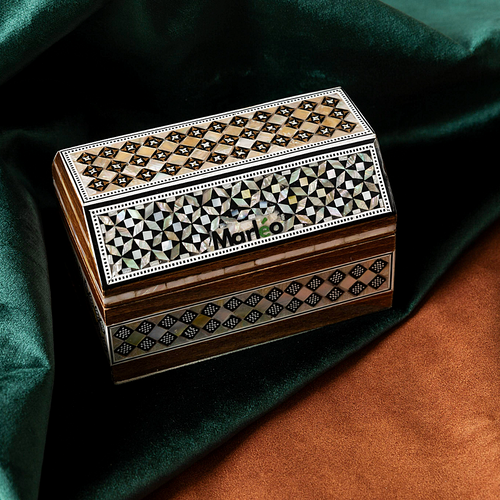Discover the precision and craftsmanship of Japanese watch movements in our in-depth article.
Japanese Watch Movements Are Superior
The world of watchmaking is a testament to human ingenuity and precision engineering. Among the various countries renowned for their watch craftsmanship, Japan stands out for its superior watch movements. Understanding the basics of watch movements is key to appreciating why Japanese watch movements are held in such high regard.
Understanding the Basics of Watch Movements
Watch movements are essentially the engine that powers a timepiece, allowing it to accurately measure and display the passage of time. They are the heart and soul of a watch, dictating its performance and reliability. In order to fully comprehend the superiority of Japanese watch movements, it is crucial to delve into the role they play and the different types available.
When it comes to Japanese watch movements, precision and craftsmanship are at the forefront. Japanese watchmakers have a long-standing reputation for producing movements that are not only reliable but also innovative. Brands like Seiko and Citizen have been pioneers in the industry, constantly pushing the boundaries of what is possible in watchmaking.
The Role of Watch Movements
Watch movements are responsible for three key functions: timekeeping, date display, and additional complications such as chronographs or moon phase indicators. They rely on a series of intricate gears, springs, and levers to regulate the movement of the watch hands and establish accurate timekeeping.
Japanese watch movements are known for their precision and attention to detail. Every component is meticulously crafted to ensure optimal performance, resulting in timepieces that can withstand the test of time. The craftsmanship that goes into Japanese movements is a testament to the dedication of the watchmakers who strive for perfection in every piece they create.
Different Types of Watch Movements
There are primarily three types of watch movements: mechanical, quartz, and hybrid. Mechanical movements, often regarded as the pinnacle of watchmaking, rely on a complex system of gears and springs that must be manually wound or automatically wound through the motion of the wearer's wrist. Quartz movements, on the other hand, utilize the piezoelectric properties of quartz crystals to create a highly accurate and low-maintenance timekeeping system. Hybrid movements combine both mechanical and quartz elements to offer the best of both worlds.
Japanese watch movements have been at the forefront of innovation, with brands like Seiko introducing groundbreaking technologies such as the Spring Drive movement. This unique movement combines the best of mechanical and quartz technology, resulting in unparalleled accuracy and a smooth sweeping seconds hand. The continuous pursuit of excellence in Japanese watchmaking has solidified the country's reputation as a powerhouse in the industry.
The Craftsmanship of Japanese Watch Movements
Japanese watch movements are renowned for their exceptional craftsmanship, which can be attributed to the relentless pursuit of precision, accuracy, durability, and reliability.
Japanese watchmaking has a rich history that dates back centuries, with artisans passing down their meticulous techniques from generation to generation. This tradition of craftsmanship is evident in the intricate detailing and precision engineering of Japanese watch movements, setting them apart as some of the finest in the world.
The Precision and Accuracy
Japanese watchmakers leave no stone unturned when it comes to precision and accuracy. Each component of a Japanese watch movement is meticulously crafted and assembled with meticulous attention to detail. This unwavering commitment to accuracy ensures that Japanese watches consistently keep time with exceptional precision, allowing wearers to rely on their timepieces for important events and daily activities.
Furthermore, Japanese watchmakers are known for their innovative spirit, constantly pushing the boundaries of technology to enhance the precision of their timepieces. From advanced materials to cutting-edge manufacturing techniques, Japanese watch movements continue to set new standards for accuracy in the horology industry.
The Durability and Reliability
Japanese watch movements are built to last. The robust construction and use of high-quality materials guarantee the durability and reliability of Japanese watches. Engineers and craftsmen meticulously design and test each component to withstand the rigors of daily wear and to endure for generations. This reputation for exceptional durability has made Japanese watches a favorite among watch enthusiasts and collectors alike.
Moreover, the commitment to reliability goes beyond just the physical components of the watch. Japanese watchmakers also prioritize the longevity of their timepieces by incorporating innovative maintenance and servicing programs, ensuring that each watch continues to perform at its best for years to come.
Comparing Japanese and Swiss Watch Movements
While Japanese watch movements excel in their own right, it is worth comparing them to the renowned Swiss watch movements to gain a deeper understanding of their superiority.
When delving into the technical differences between Japanese and Swiss watch movements, one cannot overlook the rich history and heritage that each brings to the table. Swiss watch movements are often associated with traditional mechanical movements, which require manual or automatic winding.
These intricate mechanisms have been perfected over centuries, showcasing Swiss craftsmanship at its finest. On the other hand, Japanese watch movements embrace both mechanical and quartz movements, offering a wider range of options for watch enthusiasts. This diversity sets Japanese watch movements apart, allowing for innovative designs and functionalities that cater to a modern audience while still honoring traditional horological practices.
The Technical Differences
Swiss watch movements are often associated with traditional mechanical movements, which require manual or automatic winding. Japanese watch movements, on the other hand, embrace both mechanical and quartz movements, offering a wider range of options for watch enthusiasts. This diversity sets Japanese watch movements apart, allowing for innovative designs and functionalities.
Furthermore, exploring the aesthetic differences between Japanese and Swiss watch movements unveils a captivating contrast in design philosophies. The artistry of watchmaking extends beyond the technical aspects, with aesthetics playing a significant role in defining the character of a timepiece.
Swiss watch movements are often celebrated for their intricate designs and meticulous finishing, reflecting a heritage of luxury and sophistication.Each component is meticulously crafted to exude elegance and prestige. In contrast, Japanese watch movements excel in clean and minimalist aesthetics, drawing inspiration from Zen principles of simplicity and harmony. The focus on understated elegance and functionality appeals to a more contemporary sensibility, where less is indeed more.
The Aesthetic Differences
The artistry of watchmaking extends beyond the technical aspects, with aesthetics playing a significant role. Swiss watch movements are often celebrated for their intricate designs and meticulous finishing, while Japanese watch movements excel in clean and minimalist aesthetics. Both approaches have their charm, with Swiss movements captivating art enthusiasts and Japanese movements appealing to those who appreciate simplicity and understated elegance.
The Influence of Japanese Culture on Watch Movements
The philosophy of Japanese craftsmanship and its impact on watch movements cannot be overlooked. Japanese culture has profoundly influenced watchmaking, contributing to the unique characteristics and excellence of Japanese watch movements.
Japanese craftsmanship is rooted in a deep appreciation for meticulous attention to detail and a reverence for nature. These values translate seamlessly into the world of watchmaking, where every minute component is treated with utmost care and precision. Japanese watch movements embody the spirit of craftsmanship, ensuring that each timepiece is a testament to the dedication and skill of its makers.
Furthermore, Japanese culture's emphasis on harmony and balance is reflected in the design and functionality of Japanese watch movements. The intricate interplay of gears and springs within a watch is akin to the delicate balance found in traditional Japanese art forms such as ikebana (flower arranging) and bonsai (miniature tree cultivation). This attention to balance not only enhances the aesthetic appeal of Japanese watches but also contributes to their accuracy and longevity.
The Impact of Japanese Innovation
Japanese watchmakers have consistently pushed the boundaries of innovation and introduced groundbreaking technologies to the industry. Their relentless pursuit of refinement and improvement has resulted in advancements such as solar-powered movements and ultra-high-frequency quartz movements. These innovations not only enhance the performance of Japanese watches but also contribute to the sustainable and eco-friendly aspects of modern watchmaking.
Moreover, Japanese watchmakers have also embraced traditional Japanese craftsmanship techniques such as maki-e (gold lacquer painting) and shippo (enamel work) to adorn watch dials and cases. These intricate decorative methods not only showcase the artistry of Japanese culture but also add a touch of elegance and sophistication to Japanese timepieces. By combining traditional craftsmanship with cutting-edge technology, Japanese watchmakers have created a unique fusion that sets their timepieces apart in the global market.
The Future of Japanese Watch Movements
As technology continues to evolve, so too will Japanese watch movements. The future holds exciting possibilities for further advancements and innovations that will solidify the standing of Japanese watch movements as superior timekeeping mechanisms.
Technological Advancements and Innovations
The relentless pursuit of improvement will see Japanese watch movements integrate cutting-edge technologies such as smart features and connectivity. These advancements will enhance the functionality and convenience of Japanese watches, making them indispensable tools for modern living without compromising their superior craftsmanship and accuracy.
The Global Impact and Influence
Japanese watch movements will continue to leave an indelible mark on the global watch industry. Their reputation for precision, durability, and innovation will attract enthusiasts and collectors from around the world. As Japanese watchmakers collaborate with international brands and expand their reach, the influence of Japanese watch movements will only grow stronger, cementing their superiority in the years to come.
In conclusion, Japanese watch movements are truly superior in both their technical prowess and cultural influence. From their precision and durability to their commitment to innovation and craftsmanship, Japanese watch movements embody the essence of excellence. Whether you are a horology aficionado or a casual watch wearer, a Japanese timepiece is sure to offer an exceptional and enduring statement of style and reliability.

